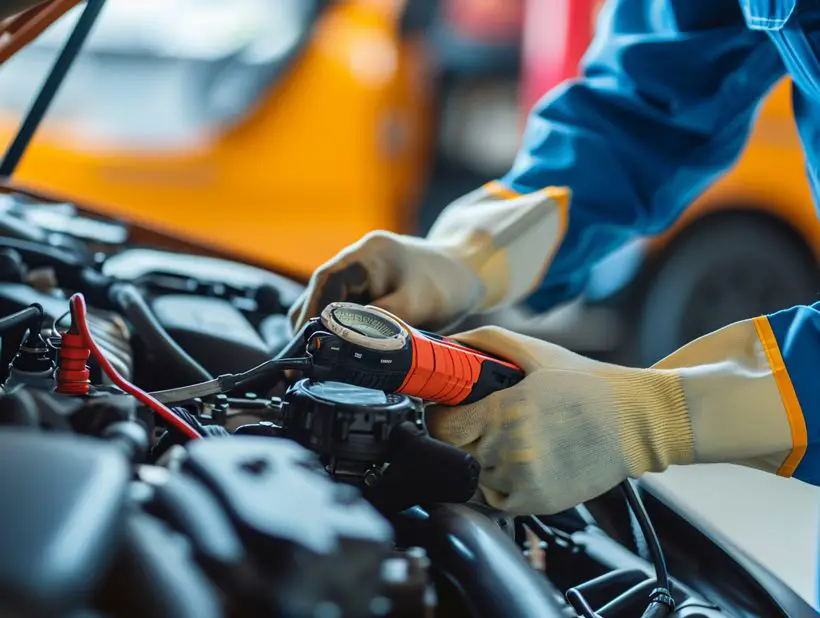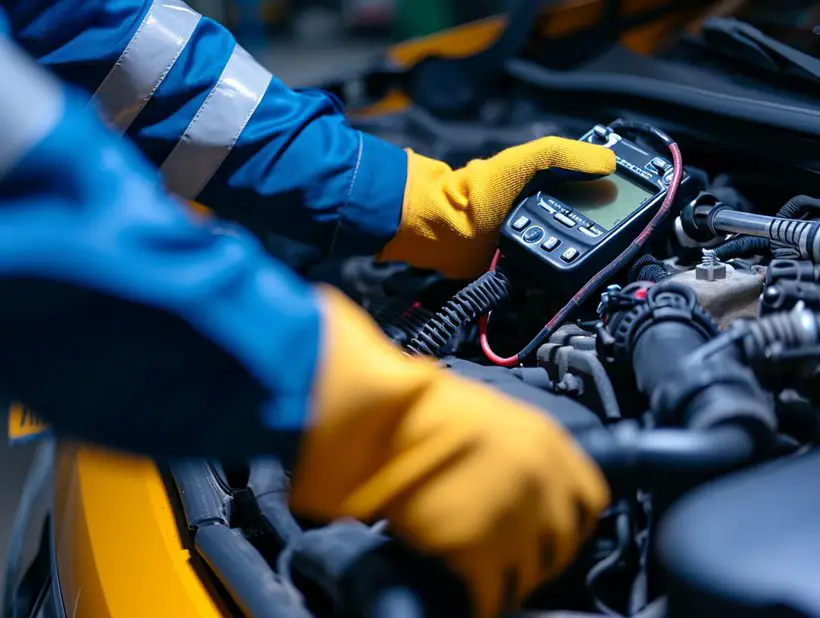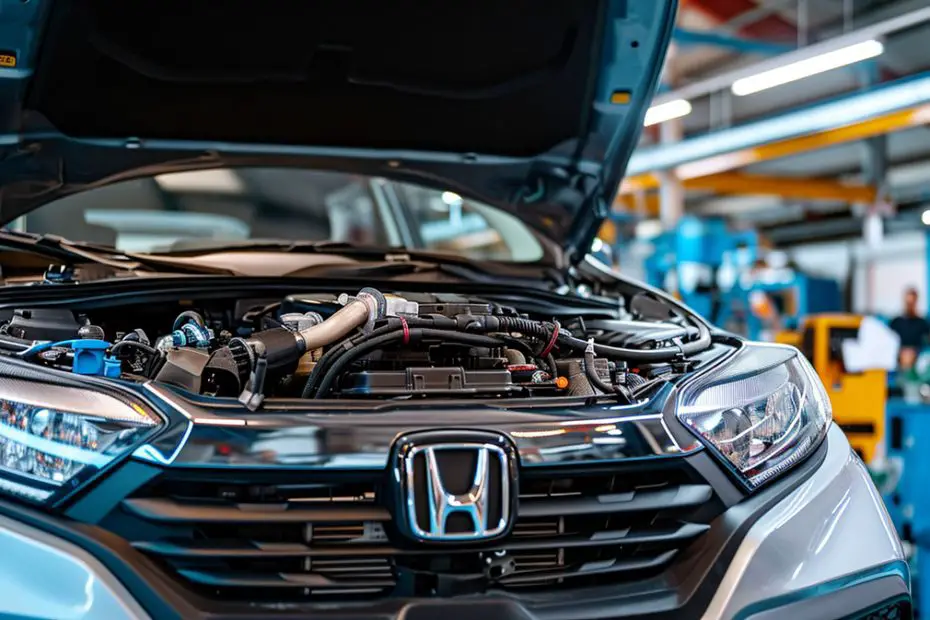Experiencing rough idling or your car stalling unexpectedly can be more than just a nuisance; it’s often a sign that your idle air control valve might need attention. I’ve been there, and trust me, it’s something you’ll want to fix sooner rather than later.
Luckily, replacing an idle air control valve isn’t as daunting as it might seem. With the right tools and a bit of know-how, you can tackle this project in your garage and get your ride running smoothly again. Let’s dive into the steps to diagnose and fix these common issues by replacing the idle air control valve.
What is an Idle Air Control Valve?
Coming across the term ‘Idle Air Control Valve’ might seem daunting at first, but it’s a critical component in your vehicle’s engine that deserves attention. To put it simply, the Idle Air Control Valve, or IACV, is responsible for maintaining a stable and consistent engine idle speed. This valve manages the amount of air that bypasses the throttle plate when the throttle is closed. Why is this important? Well, the right amount of air keeps your engine running smoothly without stalling or idling roughly‚ especially during cold starts or when the air conditioning is on.

Underneath the technical jargon, the IACV is all about balance. It ensures the engine gets the necessary air during idle conditions. Here’s a breakdown of its key functions:
- Regulates Engine Idle Speed: Adjusts airflow to maintain the desired engine RPM.
- Compensates for Engine Load: Detects additional load such as AC or power steering and adjusts accordingly.
- Improves Cold Start Performance: Allows additional air during cold starts to prevent stalling.
These functions highlight the valve’s role in engine performance and efficiency. The IACV operates in a closed-loop system controlled by the vehicle’s computer. It receives signals based on various sensors’ data and adjusts the airflow accordingly.
So, let’s dive into how IACV can affect your driving experience. Picture this: you’re waiting at a red light, and your car begins to shudder, maybe it even stalls. That’s your car crying out for IACV help. Factors that might lead to this include:
- A buildup of carbon deposits can restrict or block the air flow
- Electrical issues within the IACV or its control circuit
- A malfunctioning or worn out IACV that fails to regulate the air properly
The signs are there, and the culprit is often the IACV. It’s a small, but mighty component, silently dictating the comfort and reliability of your ride. As other sections of the article have highlighted, proper diagnosis is crucial before jumping to conclusions or reaching for the toolbox. With a well-functioning IACV, your vehicle should handle idle scenarios like a champ, effortlessly managing the engine’s ballet of burning fuel with the grace of a well-oiled machine.
Signs of a Faulty Idle Air Control Valve
When your vehicle’s idle air control valve is failing, you’ll notice several unmistakable symptoms that point to its deterioration. As we’ve established, the IACV is crucial for a smooth-running engine, and when it’s not working correctly, your car will let you know. Here are the most common signs that you may have a faulty IACV.

Irregular Idle Speed
- The engine RPM fluctuates
- The vehicle struggles to maintain consistent idle
- Sudden stalling when the engine comes to a stop
An erratic idle speed is one of the first indicators suggesting that the IACV may need attention. A fully functional IACV should keep the engine running smoothly without major fluctuations in the revolutions per minute (RPM).
Check Engine Light
An illuminated check engine light is another red flag. Modern vehicles are equipped with onboard diagnostics that trigger the check engine warning when there’s a problem. If your car’s computer detects an issue with the IACV, it can turn on this light.
Engine Stalling
Stalling can result from a variety of issues, but a malfunctioning IACV is often a contributor. If you find your vehicle suddenly stalling when coming to a stop, the IACV might be to blame. This occurs due to the valve not regulating air correctly, leading to an inadequate mixture of air and fuel.
Rough Idle
Below are typical symptoms of a rough idle caused by a faulty IACV:
- Shaking or vibrating felt in the cabin
- The car feels like it’s about to stall at traffic lights
- Unusual sounds coming from the engine when idle
Poor Engine Performance
The engine’s performance can also be a clear indicator that the IACV isn’t functioning properly.
- Difficulty starting the engine, especially during cold weather
- Unexplained drops in fuel efficiency
- Lack of power when accelerating
By being attuned to these signs, car owners can address IACV issues before they escalate. Detecting problems early can save time and money, and more importantly, it ensures the longevity and reliability of your vehicle. Regular maintenance and timely intervention are your best defenses against the inconvenience that comes with a failing IACV. It’s about knowing your car, understanding the signs it presents, and taking the appropriate measures‚Äîand in this case, potentially replacing the idle air control valve.
Gathering the necessary tools and materials

Before tackling the replacement of an Idle Air Control Valve (IACV), it’s crucial to have all the necessary tools and materials at hand. This prepares you for a smooth and efficient job, minimizing the possibility of interruptions due to missing items. Here’s a checklist of what I typically gather:
- Socket set: Primarily to unscrew bolts that secure the IACV.
- Screwdrivers: Flathead and Phillips-head, for any additional screws.
- Pliers: Sometimes hose clamps or other connectors need a firm grip.
- New IACV gasket: Ensures a clean seal upon installation.
- Replacement IACV: Make sure it’s the correct model for your vehicle.
- Throttle body cleaner: For cleaning the area around the old valve.
- Clean rags: To wipe off any debris and cleaner residue.
| Item | Purpose | Quantity |
|---|---|---|
| Socket Set | To unscrew IACV bolts | 1 Set |
| Screwdrivers | To remove/install screws | 1 Set |
| Pliers | To grip hose clamps/connectors | 1 |
| New IACV Gasket | For a proper seal | 1 |
| Replacement IACV | Correct model for the vehicle | 1 |
| Throttle Body Cleaner | To clean the installation area | As needed |
| Clean Rags | To clean debris and residue | As needed |
Double-check the user manual or service guide for any specific tools your vehicle’s IACV might require. It’s better to be over-prepared than to find yourself in a situation where you’re searching for a tool mid-process. It’s also wise to have your vehicle’s service guide on hand. This guide often contains important information about torque specifications and the location of the IACV.
Remember, the quality of the tools can make a significant difference. While you don’t need the most expensive tools on the market, opting for reliable and well-reviewed tools can make the job easier and help you avoid stripping bolts or damaging components. Take the time to organize your workspace and ensure everything is within reach before starting. It’s these preparatory steps that often distinguish a frustrating experience from a manageable DIY project.
Step 1: Diagnosing the Issue
Before I dive into the actual replacement of the Idle Air Control Valve, it’s crucial to diagnose the problem accurately. Often, a rough idle or a stalling engine can be attributed to a faulty IACV, but there are other culprits too. So, I always start by methodically checking other potential issues that could be causing these symptoms. Here‚Äôs my checklist:
- Vacuum Leaks: The engine relies on a precise balance of air and fuel. Any unexpected air entering the system can disrupt this balance leading to idle issues.
- Spark Plugs: Worn out spark plugs might not be igniting the fuel properly, which can also result in rough idling.
- Fuel System: A clogged fuel filter or pump could starve the engine of fuel, causing it to stumble or stall.
- Electrical Connections: It’s important to ensure all sensors and connections are intact, as faulty electricals can easily mimic an IACV issue.
With all other possibilities checked off and if the problem persists, it‚Äôs time to examine the IACV itself. To confirm it’s the culprit, I‚Äôll look for telltale signs like an irregular idle when the engine is warm, fluctuations in idle speed, or difficulty starting the engine. Performing a code check with an OBD2 scanner is another step I won’t skip ‚Äì if it returns codes related to the IACV, that’s a strong indicator it needs replacing.
The next stage involves physically inspecting the IACV. Located near the throttle body, I‚Äôll look for any visible damage or accumulation of dirt which could be impeding its function. If the visual checks don’t reveal anything, I might run a more detailed electronic test, often referring to the vehicle’s service manual for specified resistance values and procedures.
Once I’ve determined that the IACV is indeed the issue, I’ll proceed with my well-organized workspace, all the necessary tools laid out, and a replacement IACV and gasket at the ready. The focus now shifts to removing the old valve and that’s what I’ll cover next.
Step 2: Locating the Idle Air Control Valve

When it’s time to get under the hood, the first task at hand is to locate the Idle Air Control Valve. Typically found on the throttle body, the IACV can be a bit elusive if you’re not familiar with engine components. Here’s how I pinpoint its location:
- Check the vehicle’s service manual: Each model has the IACV in a slightly different spot. Your manual will have a diagram.
- Look for a cylindrical or rectangular component: It’s usually bolted to the throttle body and has an electrical wiring harness connected to it.
- Trace the air intake hose: It leads to the throttle body, helping to narrow down your search.
Delving further, I ensure the engine is cool before I begin the task and disconnect the battery to prevent any electrical mishaps. Once you trace the air intake hose to where it meets the throttle body, the IACV is typically nestled on the side, a modest component that has a significant impact on your vehicle’s idle performance. In many cars, the IACV is fairly accessible, though some may require you to remove other parts for better visibility and access.
Gathering my tools, including a ratchet, socket set, and screwdrivers, I’m ready to gently remove any connectors or hoses in the way. I’m always mindful to label and photograph connections to ensure a hassle-free reassembly. If there’s any debris, a quick brush off will make for a smoother operation.
For those who like specifics, here’s a simplified breakdown:
| Component | Location Detail |
|---|---|
| Air intake hose | Leads to throttle body |
| IACV | Bolted to the throttle body |
| Electrical wiring | Connected to the IACV |
| Additional components | May require removal for access |
With a clear view and my tools at the ready, it’s time to move to the next step where I’ll dive into the removal process. Patience is key, as each car model might present a unique challenge.
Step 3: Removing the Old Idle Air Control Valve
After ensuring that you’ve pinpointed the Idle Air Control Valve as the culprit and prepped your workspace, it’s time to remove the old IACV. I’ll guide you through this step by step, highlighting each action to take that’ll make the process smoother.
First, I make sure that all electrical connections to the IACV are disconnected. This typically involves a wiring harness that needs to be carefully removed. Here’s what I do:
- Locate the harness clip.
- Press down or slide the retaining clip to release the harness.
- Gently wiggle the harness to unplug it from the IACV.
With electrical connections out of the way, I direct my attention to the mounting screws or bolts. Depending on the car model, there could be two or more fasteners holding the valve in place. I use a suitable socket or wrench to twist these bolts:
- Turn each bolt counterclockwise, applying even pressure.
- Keep bolts in a safe place after removal to avoid losing them.
Now that the bolts are removed, I gently pull the IACV out. It may require a bit of finesse if it’s held tight by old gasket material or carbon buildup. I’m careful not to force it and risk damaging the throttle body. Instead, I use gentle rocking motions to ease it out.
Once the valve is off, I inspect the area for any debris or gasket remnants. It’s crucial to clean the surface where the new IACV will seat:
- Use a gasket scraper to remove old material.
- Follow up with a clean cloth and appropriate cleaner to wipe the area down.
Pro Tip: While I’ve got everything disassembled, it’s a good opportunity to inspect the throttle body and surrounding components for any signs of wear or damage.
That’s it‚Äîthe old IACV is out and we’re on our way to a smoother running engine. Don’t rush; take your time and ensure everything is in order for the new valve installation. Next, I’ll move on to preparing and installing the replacement IACV.
Step 4: Installing the New Idle Air Control Valve
After ensuring the surface is clean and free from debris, I’m ready to install the new Idle Air Control Valve (IACV). I always recommend purchasing a high-quality OEM replacement or a part from a reputable aftermarket supplier to ensure compatibility and longevity.

Before installing the new IACV:
- Confirm that it matches the old one in size and shape
- Check that the package includes a new gasket‚Äîif not, I’ll acquire one separately
I’ll then proceed with the following steps:
- Position the New Gasket: Carefully place the new gasket over the throttle body to prevent any vacuum leaks.
- Install the New IACV: Align the new IACV with the mounting holes and make sure it sits flush against the throttle body.
- Secure it in Place: I use the retaining bolts or screws I previously set aside to bolt the new IACV onto the throttle body. I make sure not to overtighten these as I could strip the threading or crack the housing.
At this point, it’s crucial to reconnect all the electrical connections I had disconnected from the old IACV. I’m always cautious to make sure they’re secure because a loose connection could result in erratic idling or even recurrence of the original problem.
- Reconnect electrical harness
- Ensure a firm connection with no corrosion or bent pins
With the IACV installed and electrical connections made, I’ll double-check all my work:
| Checklist Item | Status |
|---|---|
| Gasket aligned | ‚úì |
| IACV flush with body | ‚úì |
| Bolts tightened | ‚úì |
| Electrical connection | ‚úì |
After everything’s checked off, I’m ready to start the car and allow it to idle. During this process, the car’s computer relearns the ideal idle conditions with the new component. It’s normal for the idle to take a minute or two to stabilize.
My final step involves a test drive. I’ll run the vehicle through various driving conditions to monitor the behavior of the idle and confirm that stalling and rough idling issues are resolved. It’s also a great time to listen for any unusual noises that could indicate improper installation. If all feels and sounds correct, the new IACV could well be exactly what my car needed to operate smoothly.
Step 5: Testing the New Idle Air Control Valve
After successfully installing the new Idle Air Control Valve on my car, it’s crucial to ensure that it’s functioning correctly to address the rough idle and stalling issues. I begin by performing a few simple tests.
First, I check for any diagnostic trouble codes (DTCs) with an OBD-II scanner. It’s important to remember that if the previous IACV malfunction triggered any error codes, I need to clear these codes from the system. If the engine light comes back on after this step, it suggests an issue still exists and further diagnosis is required.
Next, I turn to the most critical part‚Äîthe practical test. Starting the engine is the true moment of truth for the newly installed IACV. I listen carefully for the engine settling into a steady idle. It’s normal for the idle to be a bit erratic at first as the computer adjusts to the new valve.
To simulate various driving conditions, I proceed with the following steps:
- Idling Test:
- Rev Test:
- Drive Test:
During the test drive, it’s imperative to monitor the engine’s response in real driving scenarios. I especially pay attention when coming to a stop or when taking my foot off the accelerator at cruising speeds. These instances can reveal a lot about the IACV’s operation.
Throughout this testing phase, I also keep an eye on the temperature gauge and any irregularities in the engine’s performance. I’m watchful for the car running too lean or too rich, which can occur when the IACV does not regulate the airflow correctly.
Regular monitoring over the next few days is also necessary to ensure the adaptations made by the car’s computer are effective and the idling issues have been ironed out. It’s this attention to detail and post-installation vigilance that can save time, money, and the inconvenience of further repairs down the line.
